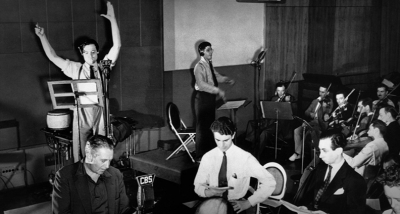
Sometimes films are shots or photographed without sound: the dialogue is added later together with sound effects and other noises. When these sounds are added the noise of a waterfall might be produced by merely shaking water about in a basin or the voice of a stage actor might replace that of the film actor in a process known as dubbing.
The major developments in cinematography were the introduction of sound in 1927 and the advent of colour photography.
The cinema really grew up as an art after the Second World War but it found an extremely dangerous rival in television. So the film industry began to think up counter attraction. These included the evolution of wide screens as in the processes known as Cinema Scope and Cinerama. In wide-screen presentations, a special lens may be used that spread out the image on the film to fill the screen. When the film is shot, a similar kind of lens is used to squeeze a wide field of view on to standard film. Modern cinemas in addition may also use stereophonic sound which is emitted by numerous loudspeakers. This gives the audience the impression that they are might in the middle of what is happening.
The story of the cinema is not yet finished. Scientists are studying a way of producing satisfactory three-dimensional films so that the images are no longer flat. Experimental have also been carried out with a circular screen that completely surrounds the audience.
Picture Credit : Google

